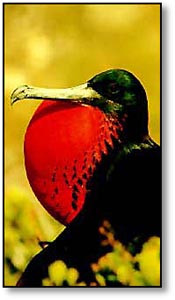History and Culture
Geographia iExplore
Ecuador |
 Ecuador's
culture and history mirrors the diversity of its landscape. Like much
of South America, Ecuadorian culture blends the influences of Spanish
colonialism with the resilient traditions of pre-Columbian peoples.
Archaeologists trace the first inhabitants as far back as 10,000 BC,
when hunters and gatherers established settlements on the southern
coast and in the central highlands. By 3,200 BC three distinct agricultural-based
civilizations had emerged, producing some of the hemisphere's oldest
known pottery. They developed trade routes with nearby Peru, Brazil,
and Amazonian tribes. Culture continued to thrive and diversify, and
by 500 BC large cities had been established along the coast. Their
inhabitants had sophisticated metalworking and navigational skills
and they traded with Mexico's Maya. In 1460 AD, when the Inca ruler
Tupac-Yupanqui invaded from the south, three major tribes in Ecuador
were powerful enough to give him a fight: the Canari, the Quitu, and
the Caras.
Ecuador's
culture and history mirrors the diversity of its landscape. Like much
of South America, Ecuadorian culture blends the influences of Spanish
colonialism with the resilient traditions of pre-Columbian peoples.
Archaeologists trace the first inhabitants as far back as 10,000 BC,
when hunters and gatherers established settlements on the southern
coast and in the central highlands. By 3,200 BC three distinct agricultural-based
civilizations had emerged, producing some of the hemisphere's oldest
known pottery. They developed trade routes with nearby Peru, Brazil,
and Amazonian tribes. Culture continued to thrive and diversify, and
by 500 BC large cities had been established along the coast. Their
inhabitants had sophisticated metalworking and navigational skills
and they traded with Mexico's Maya. In 1460 AD, when the Inca ruler
Tupac-Yupanqui invaded from the south, three major tribes in Ecuador
were powerful enough to give him a fight: the Canari, the Quitu, and
the Caras.
The Inca were a dynamic, rapidly advancing society. They originated in a pocket of Peru, but established a vast empire within a century. It dominated Peru and extended as far as Bolivia and central Chile. The Inca constructed massive, monumental cities. To communicate across their empire they laid wide, stone-paved highways thousands of kilometers long and sent chains of messengers along them. These mailmen passed each other records of the empire's status, which were coded in system of knots along a rope. A winded runner could even rest in the shade of trees planted along both sides of the road. Remarkably, the Canari, Quitu, and Caras were able to hold back Tupac-Yupanqui, though they proved less successful against his son, Huayna Capac. After conquering Ecuador, Huayna Capac indoctrinated the tribes to Quechua, the language of the Incas, which is still widely spoken in Ecuador.
In celebration of his victory, Huayna Capac ordered a great city to be built at Tomebamba, near Cuenca. Its size and influence rivaled the capital of Cuzco in Peru--a rivalry that would mature with posterity. When he died in 1526, Huayna Capac divided the empire between his two sons, Atahualpa and Huascar. Atahualpa ruled the northern reaches from Tombebamba, while Huascar held court over the south from Cuzco. The split inheritance was an unconventional and fateful move, as the first Spaniards arrived in the same year. On the eve of Pizarro's expedition into the empire, the brothers entered into a civil war for complete control.
Francisco Pizarro landed in Ecuador in 1532, accompanied by 180 fully armed men and an equally strong lust for gold. Several years earlier, Pizarro had made a peaceful visit to the coast, where he heard rumors of inland cities of incredible wealth. This time, he intended to conquer the Incas just as Hernando Cortez had crushed Mexico's Aztecs--and he couldn't have picked a better time. Atahualpa had only recently won the war against his brother when Pizarro arrived, and the empire was still unstable. Pizarro ambushed the ruler, forced him to collect an enormous ransom, and then executed him. Although the Incas mounted considerable resistance to Pizarro, they were soon broken.
Spanish governors ruled Ecuador for nearly 300 years, first from Lima, Peru, then later from the viceroyalty of Colombia. The Spanish introduced Roman Catholicism, colonial architecture, and today's national language. Independence was won in 1822, when the famed South American liberator Simon Bolivar defeated a Spanish army at the Battle of Pichincha.
Bolivar united Ecuador with Colombia and Venezuela, forming the state of Gran Colombia. His plan was to eventually unite all of South America as a constitutional republic, and one can only wonder what such a nation would have been like if his dream had been realized. After eight years, however, local interests sparked Ecuador to secede from the union. Colombia and Venezuela soon split.
Ecuador's modern history has had its struggles. A long-standing, internal dispute between the conservative city of Quito and the liberal Guayaquil has at times boiled over into violence. Near the turn of the century, leaders on both sides were assassinated, and military dictators have ruled the country for most of its recent history. Ecuador returned to democracy in 1979, however, and free elections have continued since. A border dispute with Peru exists to this day, and some skirmishes recently flared in the Amazon, though fighting has subsided for the time being.
